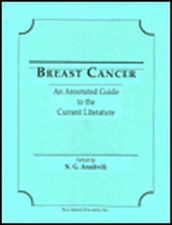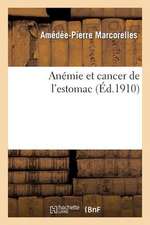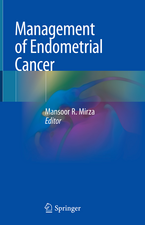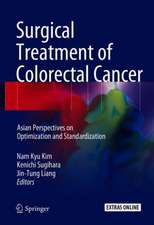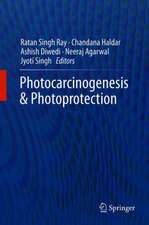RNA/DNA and Cancer
Autor Joseph G. Sinkovicsen Limba Engleză Hardback – 12 apr 2016
The author explains that there is no such evidence that “malignantly transformed” human cells survive in nature. However, when cared for in the laboratory, these cells live and replicate as immortalized cultures. These cells retain their vitality upon storage in liquid nitrogen. One can only imagine an astrophysical environment in which such cells could survive; perhaps, first their seemingly humble exosomes would populate that environment. Immortal cell populations so created may survive as individuals, or may even re-organize themselves into multicellular colonies, as representatives of life for the duration of the Universe.
This thought-provoking book is the work of a disciplined investigator and clinician with an impeccable reputation, and he enters a territory that very few if any before him have approached from the same angles. It will appeal to researchers with an interest in cell survival pathways and those researching cancer cells.
| Toate formatele și edițiile | Preț | Express |
|---|---|---|
| Paperback (1) | 1348.24 lei 38-44 zile | |
| Springer International Publishing – 18 apr 2018 | 1348.24 lei 38-44 zile | |
| Hardback (1) | 1462.73 lei 22-36 zile | |
| Springer International Publishing – 12 apr 2016 | 1462.73 lei 22-36 zile |
Preț: 1462.73 lei
Preț vechi: 1539.72 lei
-5% Nou
Puncte Express: 2194
Preț estimativ în valută:
279.89€ • 293.01$ • 231.59£
279.89€ • 293.01$ • 231.59£
Carte disponibilă
Livrare economică 17-31 martie
Preluare comenzi: 021 569.72.76
Specificații
ISBN-13: 9783319222783
ISBN-10: 3319222783
Pagini: 450
Ilustrații: XI, 815 p. 75 illus., 52 illus. in color.
Dimensiuni: 155 x 235 x 42 mm
Greutate: 1.73 kg
Ediția:1st ed. 2016
Editura: Springer International Publishing
Colecția Springer
Locul publicării:Cham, Switzerland
ISBN-10: 3319222783
Pagini: 450
Ilustrații: XI, 815 p. 75 illus., 52 illus. in color.
Dimensiuni: 155 x 235 x 42 mm
Greutate: 1.73 kg
Ediția:1st ed. 2016
Editura: Springer International Publishing
Colecția Springer
Locul publicării:Cham, Switzerland
Public țintă
ResearchCuprins
Preface. Introductions. I THE PRIMORDIAL RNA/DNA COMPLEX EVOLVING.- The Primordial Genes Are Conserved as Stem Cell Genes and Proto-Oncogenes.- The First Cells Ascend.- Eukaryotic Single Cells and the First Cell Communities Then and Now.- A Highly Effective Immune System Predating Adaptive Immunity.- Elements of Adaptive Immunity Self-Assemble.- The RNA/DNA Complex at Work.- YY Proteins.- Elusive Alleles.- The Long Trajectory of the IGF-like Receptor and Its Ligands.- Primordial Fused Genes Become Oncogenes and Encode Oncoproteins.- Performance in the Laboratory.- Inbuilt Errors not yet Corrected.- Errors or Inherent Attributes for the Sustenance of Unicellular Life.- Viral Genomic Insertions into the Host Cell’s Genome.- Viral and Cellular Proteins Interact.- Light Cast to Broken DNA, Its Repair, and Consequences.- Undisciplined Introns.- Elementary Epigenomics.- RNA/DNA: Bioengineers Supreme.- II THE ONCOGENOME.- Seamless Unity of the Nucleus and Cytoplasm: the Membranes Are Permeable.- Endogenously Initiated Immortalization is Welcome. Enforced Carcinogenesis by Exogenous Alien Initiator Is Resisted.- A Condensed Compendium.- “Malignant Transformation”.- III THE HUMAN CEREBRAL CORTICAL DNA AGAINST CANCER CELL DNA.- Will the Human Cerebral Cortex Subdue the Oncogenome?- In Self-Defense, the Cancer Cell Reactivates Its Primordial Genome Loaded with Proviruses in Order to Mobilize All Its Remaining Survival Pathways.- The Cancer Cell Viewed as a Unicellular Parasite (an Amoeba).- Astute Observers Withstand Derision.- “Making Cancer History” at M.D. Anderson Hospital.- SUMMARY.- Appendix 1.-Appendix 2.- Index.
Notă biografică
Joseph G. Sinkovics, the author of this book, was born and educated in Budapest, Hungary. As a medical student in the 1940s at the Péter Pázmány University Medical Faculty (now Semmelweis Medical University), he worked at the University Institute of Pathophysiology with Haemobartonella muris on splenectomized rats. He received his medical doctorate (MD) degree summa cum laude in 1948. He continued working as adjunct professor at the University Institute of Microbiology and as a senior virologist and board-certified clinical pathologist at the State Institute of Public Health in Budapest. His publications in German and English on bacterial L-forms and spheroplasts, and on influenza, mumps and Newcastle disease viruses (NDV) appeared in the Acta Microbiologica Hungarica and in the Archive für die Gesamte Virusforschung. One of these publications described the oncolytic effect of NDV in Ehrlich ascites carcinoma in mice. In another publication that appeared in Nature, bacterial spheroplasts were described to pass filters, undergo fusions and regenerate into vegetative cells. The Hungarian Akadémiai Kiadó published Sinkovics’ monograph under the title “Die Grundlagen der Virusforschung” in 1956. After the demolition of the popular Hungarian uprising in 1956, Sinkovics had to leave Hungary for Vienna, Austria. From there he entered the United States, where he was sponsored by Albert Sabin for a Rockefeller Fellowship. He spent one year (1957) as a Rockefeller Fellow at the Waksman Institute at Rutgers, The State University of New Jersey. In order to validate his medical degree and diploma in the USA, he served medical internship and residency in internal medicine, infectious diseases and hematology at the Cook County Hospital, Cook County School of Medicine, the Hektoen Institute for Medical Research in Chicago IL, and in hematology-medical oncology at The University of Texas M.D. Anderson Hospital, Houston TX (1958-1962). In 1962 he nt-size: 13.3333px;">was enrolled in the staff of the M.D. Anderson Hospital. He obtained by examination licenses to practice medicine in the States of Indiana, Texas, Washington and Florida. He obtained by USA specialty board examinations the medical specialty qualifications in medical laboratory virology and public health; internal medicine; infectious and tropical diseases; and in medical oncology (including the malignant diseases of blood-forming organs) and remains by training and service eligible for the specialty of hematology. At M.D. Anderson Hospital, he was elevated to the rank of professor of medicine; served as the clinical chief of the united Sarcoma-Melanoma Clinics and In-patient Services; and operated as Chief the research laboratories Section of Clinical Tumor Virology & Immunology, within the Department of Medicine. In the Section, in the mid-1960s Sinkovics described a naturally formed murine hybridoma, in which leukemia virus-producer lymphoma cells fused with specific antiviral antibody-producer normal plasma cells. This was a phenomenon not ever recognized before. He reported it first in January 1970 in the Lancet. In the late 1960s, Sinkovics found that large granular lymphocytes derived from his own blood killed in vitro cancer cells taken from both male and female gender patients. The number of these cells increased in the blood of those patients with cancer, who received an autologous viral oncolysate vaccine (produced at the Section in an institutionally approved protocol). It is now medical history that the National Cancer Institute project site visitors first considered this basic immunological phenomenon an “in vitro artifact”. It took several years before the existence of natural killer cells was accepted. In the early 1980s, the prominent St. Joseph’s Hospital of Tampa, FL offered the directorship of its newly built, free-standing 30 beds cancer hospital with research facilities, and the University of South Florida College of Medicine external professorial teaching staff position to the author of the textbook, Sinkovics JG: Medical Oncology An Advanced Course, Marcell Dekker, New York (second edition in 1986). This author accepted. He engaged Dr. Joseph C. Horvath as chief of the in-hospital Research Laboratories for the individualized preparation of viral oncolysate melanoma vaccines and immune T- and NK-cell preparations for actual treatment of patients. These services were administered in university-affiliated private practice until the establishment of the University of South Florida H.L. Moffitt Comprehensive Cancer Center in Tampa. Sinkovics published his fabulously illustrated monograph on “Cytolytic Immune Lymphocytes” by Schenk Buchverlag, Passau/Budapest, 2008.
Textul de pe ultima copertă
In this book, the author Joseph G. Sinkovics liberally shares his views on the cancer cell which he has been observing in vivo and in vitro, over a life time. Readers will learn how, as an inherent faculty of the RNA/DNA complex, the primordial cell survival pathways are endogenously reactivated in an amplified or constitutive manner in the multicellular host, and are either masquerading as self-elements or as placentas, to which the multicellular host is evolutionarily trained to extend full support. The host obliges.
The author explains that there is no such evidence that “malignantly transformed” human cells survive in nature. However, when cared for in the laboratory, these cells live and replicate as immortalized cultures. These cells retain their vitality upon storage in liquid nitrogen. One can only imagine an astrophysical environment in which such cells could survive; perhaps, first their seemingly humble exosomes would populate that environment. Immortal cell populations so created may survive as individuals, or may even re-organize themselves into multicellular colonies, as representatives of life for the duration of the Universe.
This thought-provoking book is the work of a disciplined investigator and clinician with an impeccable reputation, and he enters a territory that very few if any before him have approached from the same angles. It will appeal to researchers with an interest in cell survival pathways and those researching cancer cells.
The author explains that there is no such evidence that “malignantly transformed” human cells survive in nature. However, when cared for in the laboratory, these cells live and replicate as immortalized cultures. These cells retain their vitality upon storage in liquid nitrogen. One can only imagine an astrophysical environment in which such cells could survive; perhaps, first their seemingly humble exosomes would populate that environment. Immortal cell populations so created may survive as individuals, or may even re-organize themselves into multicellular colonies, as representatives of life for the duration of the Universe.
This thought-provoking book is the work of a disciplined investigator and clinician with an impeccable reputation, and he enters a territory that very few if any before him have approached from the same angles. It will appeal to researchers with an interest in cell survival pathways and those researching cancer cells.
Caracteristici
First in its category: no similar book is in existence
Interprets cancer cell biology in entirely new light
Argues with solid documents listed for each new point presented
Author's Comments in the Text offer immediate further explanations
A most extensive storehouse of documented facts in cancer biology
Includes supplementary material: sn.pub/extras
Interprets cancer cell biology in entirely new light
Argues with solid documents listed for each new point presented
Author's Comments in the Text offer immediate further explanations
A most extensive storehouse of documented facts in cancer biology
Includes supplementary material: sn.pub/extras









